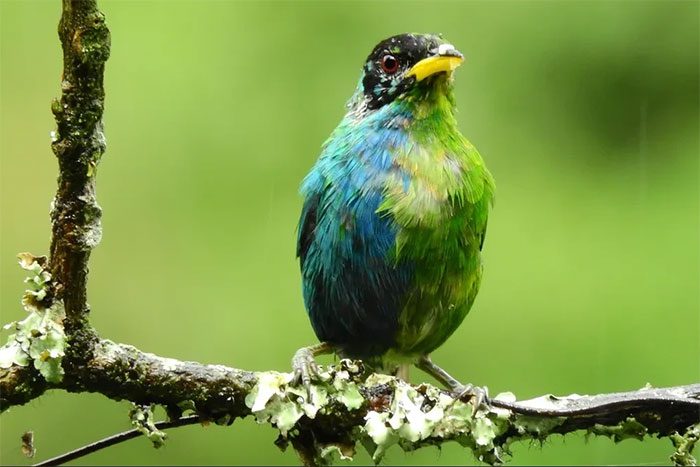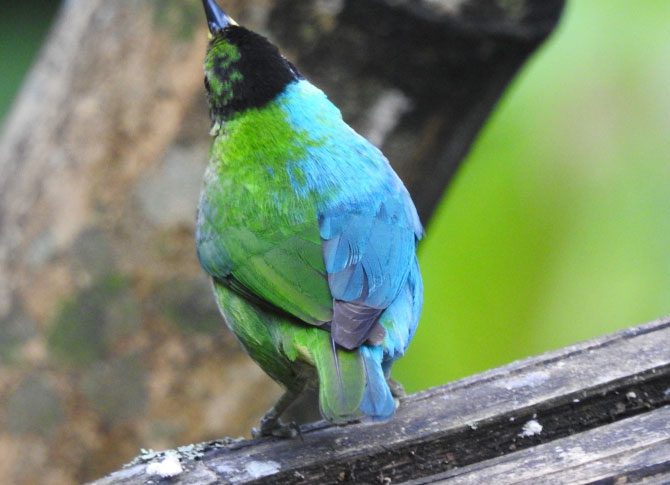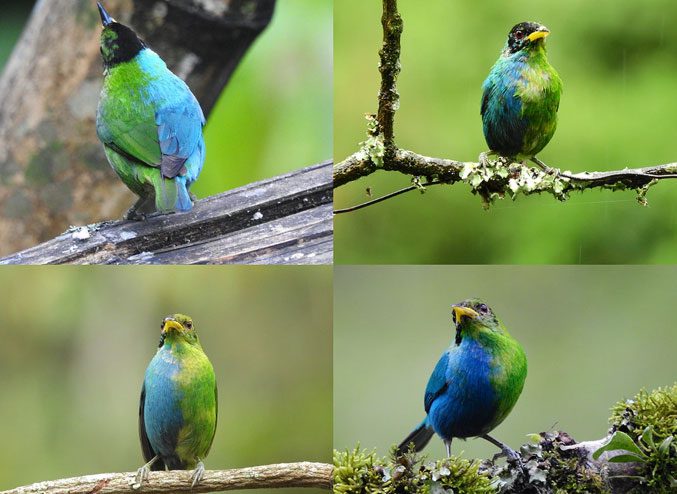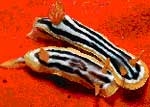The stunning colors of the bird have amazed ornithologists.
During a vacation in Colombia, John Murillo, an amateur ornithologist, and Hamish Spencer, a zoologist, accidentally encountered a rare bird with two distinctly different plumage colors. This phenomenon is known to be extremely rare among bird species.

Rare bird with two contrasting colors discovered in Colombia. (Photo: John Murillo).
The two experts immediately recognized this bird as a Green Honeycreeper (scientific name: Chlorophanes spiza) – a species native to the Hawaiian Islands – characterized by its relatively small size. This is only the second documented case of a gynandromorph in this species in over a century.
According to ornithologists, this phenomenon occurs when a bird is born with half male and half female characteristics, known as gynandromorphism.
Typically, male Green Honeycreepers have blue plumage, while females display green feathers. In this particular case, the bird exhibits both colors, evenly split down its body.
The phenomenon of bilateral gynandromorphism has been documented in other animal species, including bees, butterflies, spiders, and insects. However, it is exceedingly rare among birds.

The beautiful colors of the bird amazed ornithologists. (Photo: John Murillo).
The research team did not observe any courtship behaviors from this bird during their monitoring period. It tended to keep to itself and behaved like other members of its species.
Furthermore, the researchers were unable to collect blood and tissue samples for chromosomal analysis. Therefore, they could not confirm what caused the bird’s unique characteristics.
While there are many hypotheses about how gynandromorphic animals develop, scientists believe that it may occur in birds when an egg cell develops with two nuclei.
In mammals, male germ cells typically carry one copy of each sex chromosome (X and Y), while female germ cells have two copies of the X chromosome.

The bird’s unusual colors are likely influenced by the phenomenon of gynandromorphism. (Photo: John Murillo).
In contrast, birds have their sex chromosomes designated as Z and W instead of X and Y. In birds, the female’s egg cells will have one copy of each chromosome (ZW) in the nucleus, while the male’s sperm will carry two Z chromosomes.
Daniel Hooper, a bird research specialist, noted that gynandromorphism could occur if a female egg cell develops with two nuclei, one with a Z chromosome and one with a W chromosome. It could then be “double fertilized” by two sperm carrying Z chromosomes, leading to the formation of this unique morphology.
According to ornithologists, studying gynandromorphism in birds could lead to important discoveries that enhance our understanding of biological sex and their sexual behaviors.





















































